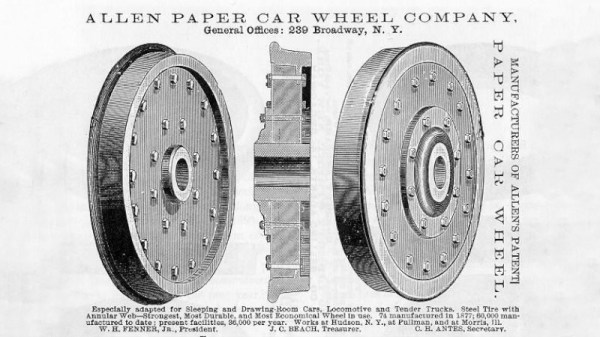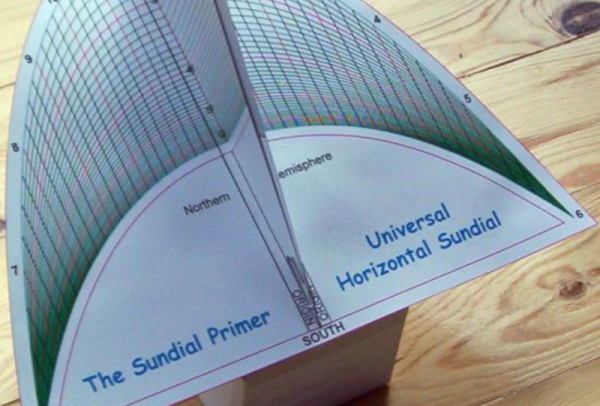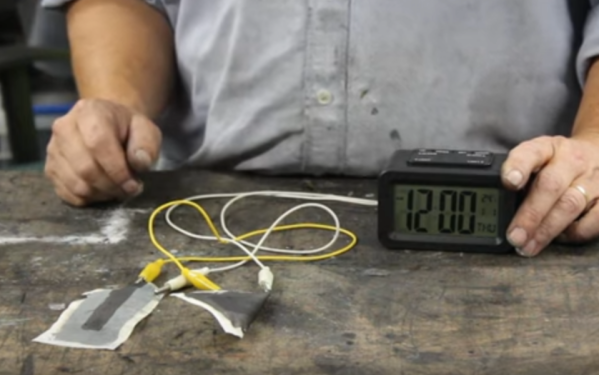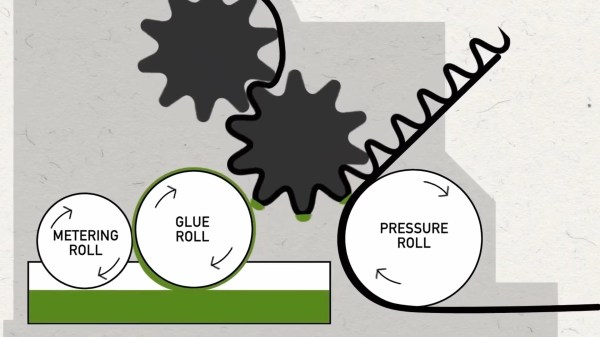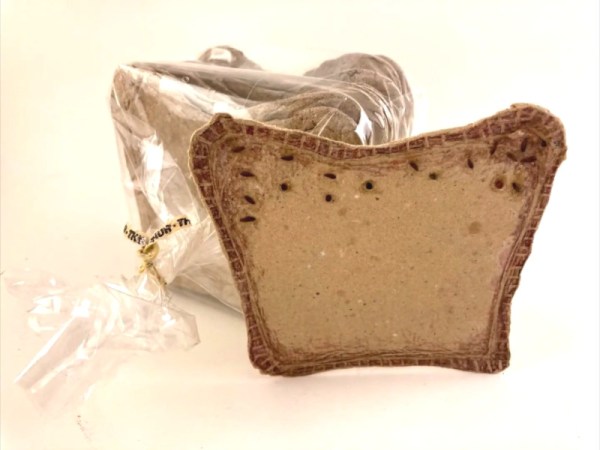Early on, railways primarily used wheels made of wood or iron. The former were cheap and relatively easy to manufacture, while the latter had far superior wear qualities. It may surprise you to learn, however, that some railways once used wheels made out of paper, as [Train of Thought] explains.
The wheels were pioneered by a man known as Richard N. Allen, in the 19th century. The wheels were constructed by layering up hundreds of sheets of paper with glue, compacting them with a press, and allowing them to cure for a few weeks. The solid paper disks were then machined to size, and were drilled to accept bolts that attached metal plates for protection. The wheels were given a cast-iron hub and a steel rim for wear reasons.
The benefit of the wheels was that their composite paper construction helped damp vibrations and noise from the wheels and rails. The North American Pullman railway ended up using the wheels for sleeper and dining carriages for the more luxurious ride they provided.
The paper wheels were short lived, however. While the wheels were up to the task when new, they would fail much sooner than solid metal wheels. A series of derailments led to the wheels being declared unsafe for use in the US by 1915.
The wheels serve as a good example of wheels and tires acting as a tuned part of a whole suspension system. Experimental wheel designs come and go, but there are reasons why we landed on certain designs for certain applications, after all. Video after the break.
Continue reading “Luxury Train Cars Used To Ride On Paper Wheels”

